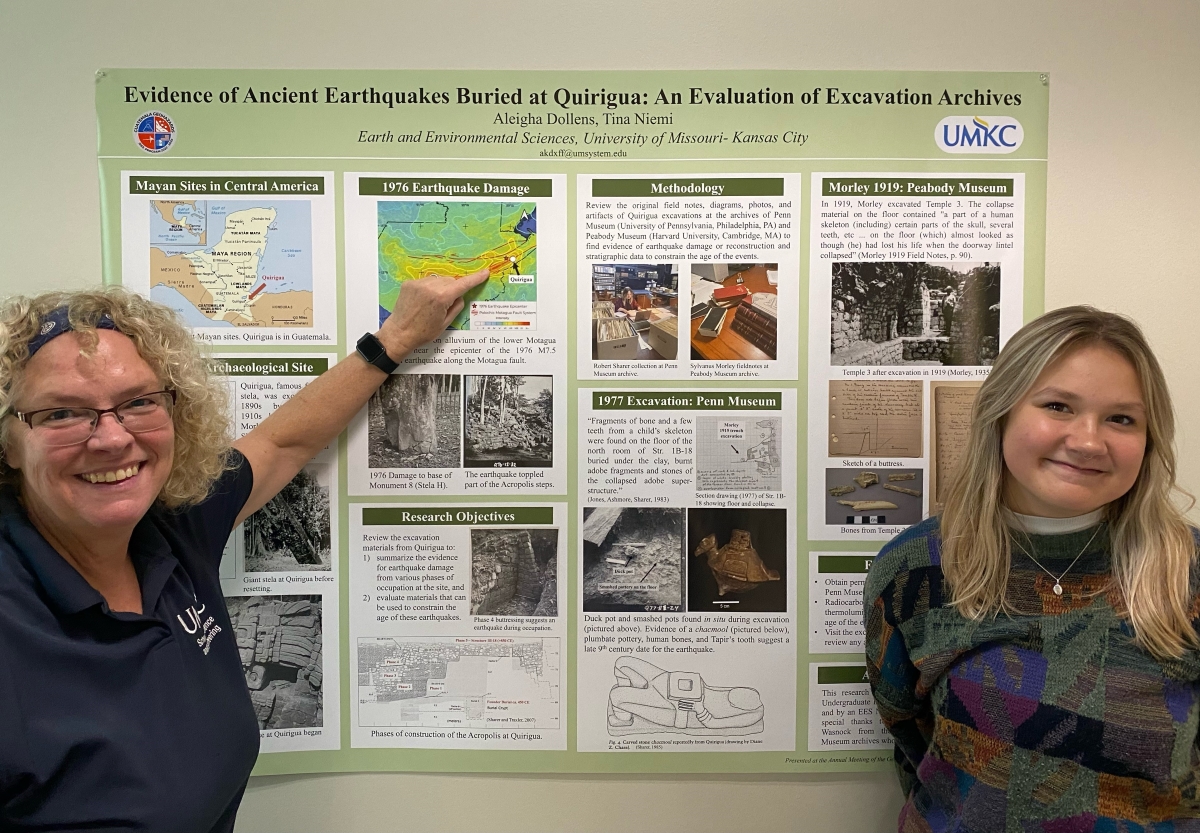Earth and environmental science student Aleigha Dollens recently won the 2023 Richard Hay Award from the Geoarchaeology Division of the Geological Society of America (GSA) for her research on evidence of earthquakes at the Mayan archaeological site of Quirigua in Guatemala. The award supports travel to the GSA annual meeting and recognizes meritorious student research.
This was especially good news to Dollens’ mentor, Tina Niemi, Ph.D., as the Curators’ Distinguished Teaching Professor was the first recipient of this award 34 years ago.
Niemi has taught geology at UMKC since 1995 and has personally mentored more than 60 undergraduate research projects with student funding from SEARCH, SUROP and NSF-funded research experience grants.
“For my MS research, I reconstructed the paleoenvironmental history of a submerged classical archaeological site along the central coast of Greece,” Niemi said. “It was the presentation of that research at the annual meeting of the GSA in 1989 that won me the first-granted Richard Hay award. I am very proud of Aleigha and her achievements and thrilled that she has followed in my footsteps with this well-deserved award. The dedication of UMKC and its leaders to support undergraduate research is phenomenal.”
Dollens and Niemi visited the University of Pennsylvania and Harvard University this past summer to search museum archives for excavation documents and artifacts that can help constrain the date of the earthquake that occurred during the final occupation of the Quirigua site.
“Winning the Richard Hay Award from the Geoarchaeology Division of the Geological Society of America is an honor like no other, especially since Dr. Tina Niemi was the first-ever recipient,” Dollens said. “She is one of my greatest supporters and pushes me to be a better geoscientist and a better person. It is an honor to get to work with such a strong woman in the geosciences field and I would not be where I am today if it weren’t for her ongoing support.”
The research was funded by the UMKC Undergraduate Research Program through SUROP and SEARCH awards and by the Earth and Environmental Science Newcomb Research Grant.

